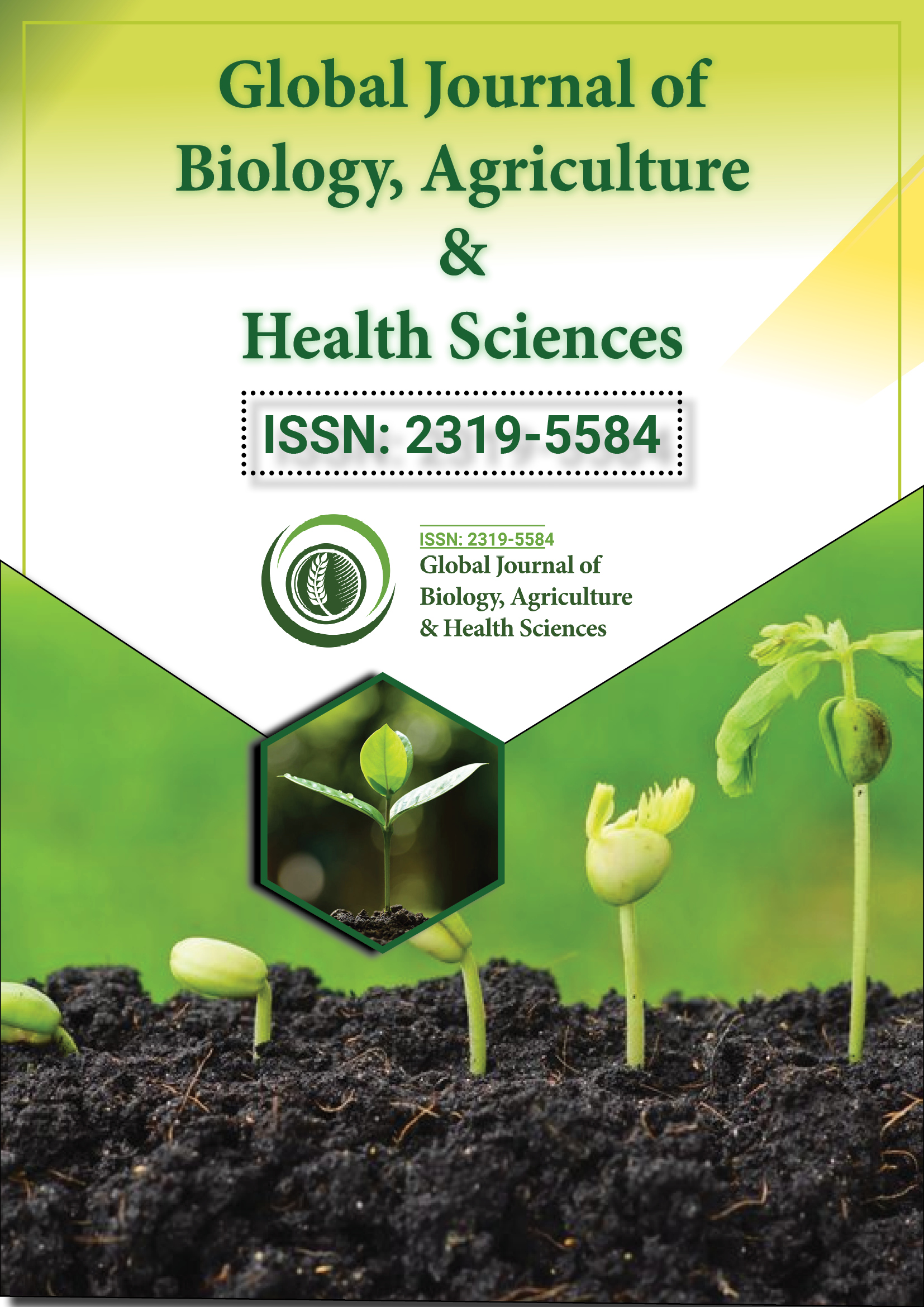Indexed In
- Euro Pub
- Google Scholar
Useful Links
Share This Page
Journal Flyer

Open Access Journals
- Agri and Aquaculture
- Biochemistry
- Bioinformatics & Systems Biology
- Business & Management
- Chemistry
- Clinical Sciences
- Engineering
- Food & Nutrition
- General Science
- Genetics & Molecular Biology
- Immunology & Microbiology
- Medical Sciences
- Neuroscience & Psychology
- Nursing & Health Care
- Pharmaceutical Sciences
Perspective - (2025) Volume 14, Issue 2
Impacts of Soil Microbial Diversity on Sustainable Crop Production
Mei Chen*Received: 26-May-2025, Manuscript No. GJHABS-25-29932 ; Editor assigned: 28-May-2025, Pre QC No. GJHABS-25-29932 (PQ); Reviewed: 11-Jun-2025, QC No. GJHABS-25-29932 ; Revised: 18-Jun-2025, Manuscript No. GJHABS-25-29932 (R); Published: 25-Jun-2025, DOI: 10.35248/2319-5584.25.14.260
Description
In recent years, agricultural landscapes have experienced substantial changes in soil health due to shifting land use, intensive fertilizer application, and climatic variations. Soil microbial diversity represents a vast network of bacteria, fungi, archaea, and other microorganisms that interact with plant roots, cycle nutrients, suppress disease agents, and influence water retention. Understanding how microbial diversity contributes to sustainable crop yields is essential for designing management practices that support longâ?term productivity.
Microorganisms in soil perform decomposition of organic matter, releasing essential nutrients such as nitrogen, phosphorus, and potassium. These nutrients are crucial for plant growth, yet chemical fertilizers often deliver only part of what crops need, sometimes leading to environmental pollution. When soil communities are rich, they tend to process organic inputs more efficiently, converting complex molecules into forms that plants absorb. This capacity reduces the need for synthetic inputs, potentially lowering input costs for farmers and minimizing runoff of excess fertilizer into water systems.
Another dimension involves plantâ?microbe interactions that enhance resilience to stress. Some bacteria, known as rhizobacteria, and certain mycorrhizal fungi establish relationships with roots that improve access to water, particularly during drought periods. They also help in resisting soilborne pathogens by outcompeting disease agents or inducing plant defenses. Where microbial richness is low, plants may have fewer partners to assist under stress, leading to weaker responses to harsh environmental conditions.
Land management influences microbial populations. Tillage disrupts soil structure, exposing microbes to fluctuating moisture and temperature, often reducing diversity. Monoculture cropping, lacking crop rotation, may favor certain microbial groups while suppressing others, leading to imbalanced communities. In contrast, intercropping or rotation with legumes adds nitrogen and varied root exudates, supporting different microbes. Organic amendments like compost or green manure provide carbon sources that soil microorganisms require, enhancing their abundance and variety. When soil cover is maintained through cover crops or residue retention, temperature and moisture fluctuations reduce, which further supports stable microbial populations.
Recent comparative studies show fields that maintain organic matter and practice minimal soil disturbance yield consistently across seasons, even when weather is variable. In one study comparing conventional tillage with noâ?till using compost amendments, yields remained stable under noâ?till conditions despite lower fertilizer application, attributed to improved microbial activity and soil structure. Enhanced soil aggregation under high microbial activity improves water infiltration, reduces erosion, and increases root penetration. These structural benefits translate into crops with stronger root systems, better access to nutrients, and improved yield quality.
Challenges exist, however, particularly in regions where farmers have limited resources or where soil degradation is long established. Rebuilding microbial diversity in degraded soils can require repeated organic inputs and time. There may also be trade for instance, increasing organic matter can lead to increased microbial respiration and COâ?? release, especially if management does not optimize carbon stabilization. Also, in some soils, microbial communities include agents that harm plant health; microbial balance matters, not only richness. Therefore, strategies that favour beneficial microbes while suppressing harmful ones are important.
Conclusion
Soil microbial diversity exerts profound influence on sustainable crop production. It supports nutrient cycling, plant resilience to stress, improvement of soil physical properties, and suppression of pathogens. While restoring degraded soils is challenging, a combination of low disturbance, organic inputs, crop diversity, and potentially microbial inoculants can lead to healthier soils and stable yields. Agricultural systems that recognize and encourage living soil communities offer promising avenues for improved food security and ecological health for generations to come. Monitoring soil health through accessible indicators, such as respiration, microbial biomass, or diversity of specific microbial markers, can guide management. Researchers must also adapt methods to local contexts; what works in one region may perform poorly in another due to climate, soil type, or cropping system.
Citation: Chen M (2025). Impacts of Soil Microbial Diversity on Sustainable Crop Production. Glob J Agric Health Sci. 14:260.
Copyright: © 2025 Chen M. This is an open-access article distributed under the terms of the Creative Commons Attribution License, which permits unrestricted use, distribution and reproduction in any medium, provided the original author and source are credited.

